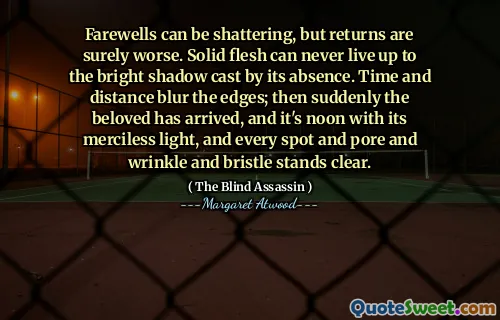You can never see yourself the way you are to someone else - to a man looking at you, from behind, when you don't know - because in a mirror your own head is always cranked around over your shoulder. A coy, inviting pose. You can hold up another mirror to see the back view, but then what you see is what so many painters have loved to paint - Woman Looking In Mirror, said to be an allegory of vanity. Though it is unlikely to be vanity, but the reverse: a search for flaws. What is it about me? can so easily be construed as What is wrong with me?
The quote discusses the complexity of self-perception versus how others perceive us. It highlights that we often see ourselves through a limited lens, influenced by our own insecurities and self-critique. While looking in a mirror, we focus on specific angles that may not capture our true essence, and this leads to a skewed understanding of ourselves.
Moreover, the quote suggests that this self-examination, often painted as vanity, can actually stem from a desire to uncover flaws rather than an intention to boast. This self-analysis can sometimes reinforce negative views, transforming curiosity into self-doubt. Thus, it invites reflection on the deeper implications of our self-image and how it contrasts with external perceptions, as illustrated by Atwood's work.






